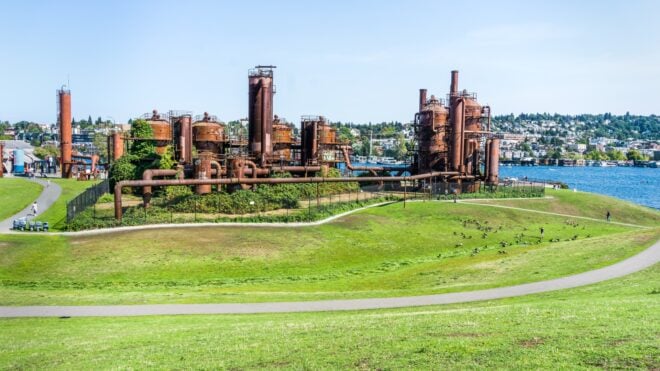It's not always easy to tell, but sometimes, what happens deep inside our bodies can tell us so much of we don't know about our health.
Take the health warnings that your nails may be giving you, for example. Just as differences in the appearance of the nails — including pitting, discoloring, and abnormal chipping — may tell us what internal issues our bodies may be suffering, there are other similar signs that we can look out for.
In an exclusive guide below, we talk about some of the main ways you can spot abnormalities in your bowel movements.
This is such crucial information to keep in mind, seeing as everything from the physical features and odor of your stool can give you clues about any serious diseases or deficiencies that might be taking place inside your body.
Scroll further to learn how you can spot dangerous signs in your own bowel movements, and let us know your thoughts in the comments below!
What Ideal, Healthy Stools Look Like:
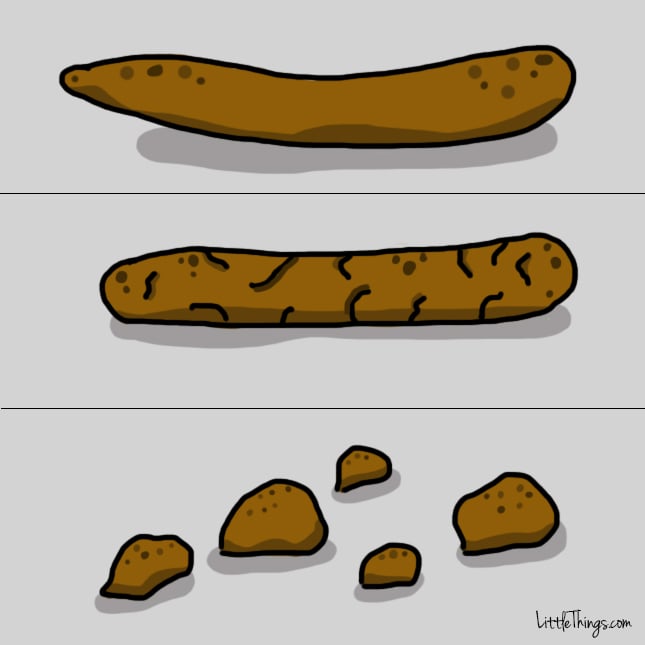
First, let's look at what a normal poop should look like. Anything within this range is completely acceptable, according to the famous Bristol Stool Chart:
- Shaped like a sausage or snake, with a smooth and soft texture.
- Shaped like a sausage, but with little cracks on the surface.
- Soft blobs with clear-cut edges that are passed pretty easily.
75% of your stool is water. The rest is a combination of fiber, live and dead bacteria, other cells, and mucus.
By looking at your stool, you can be informed about how healthy your digestive track is. Everything from its color, shape, size, and even odor can reveal tons of important information.
The first step to becoming well-informed is knowing what to look for — something that we're here to help you with.
Take a look at the following types of stools to find out how well your digestive track is actually doing.
1. Mushy And Lumpy
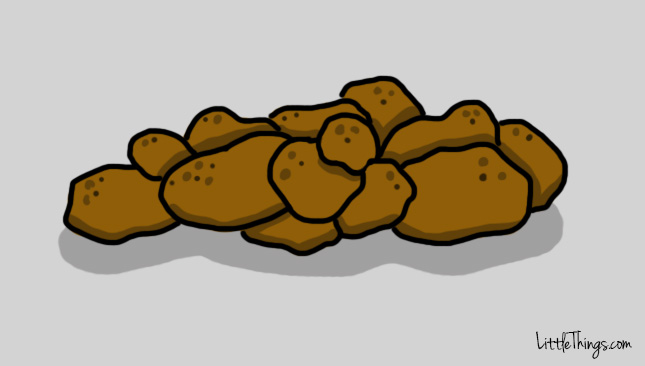
You'll most likely end up with mushy, lumpy, and "fluffy"-looking stool when you find it difficult to control the urge to run to the bathroom.
This type of stool is borderline normal, according to Konstantin Monastyrsky, a pharmacist and renowned lecturer.
This suggests that you may have a slightly hyperactive colon, or that you have included too much potassium in your diet.
Also, you may have been suddenly dehydrated, or had a spike in your blood pressure due to stress.
2. Narrow And Ribbon-Like

If you see that you have narrow, pencil-shaped stools on a frequent basis, this might be a cause for concern.
This might indicate a bowel obstruction or even a tumor, according to Dr. Joseph Mercola, an osteopathic physician. In the worst case scenario, ribbon-like stools may be a sign of colon cancer.
If you have been experiencing these stools frequently, consult your doctor immediately.
3. Black And Tar-Like
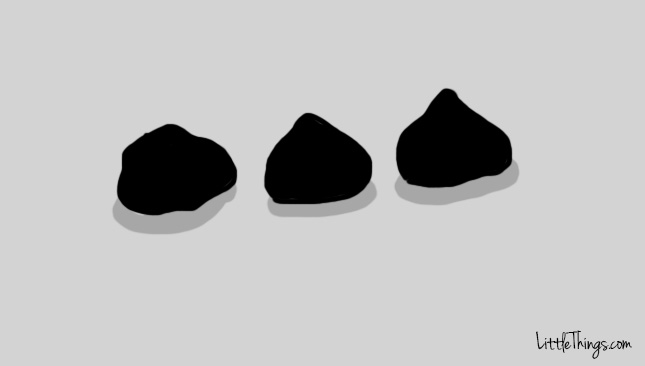
Coal-black stools most commonly mean that there is bleeding happening in your gastrointestinal tract.
However, black stools can also result from some specific medications, dietary supplements, and even from eating black licorice.
Again, it's best to consult your doctor immediately, and make sure that you're not suffering from some more serious condition, like a peptic ulcer.
4. White Or Gray Colors
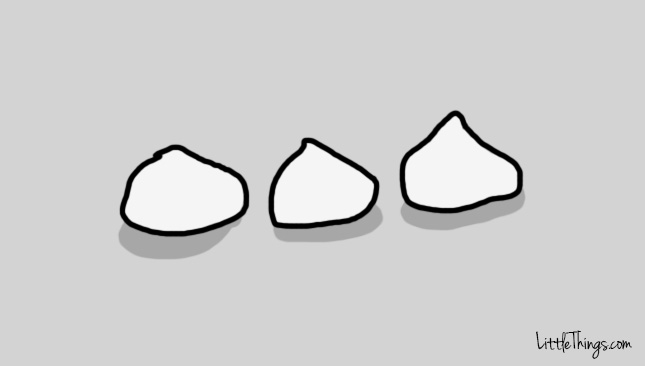
If you're seeing white or gray colors in your stool, you may lack bile — a crucial component in your gallbladder that helps with digestion and fat absorption, according to Healthline.
This may point to an even more serious problem, like hepatitis, pancreatic disorders, or a blocked bile duct.
Keep in mind that antacid medications can also produce white stool, but if this type of stool persists, contact your doctor immediately.
5. Separate, Hard Lumps
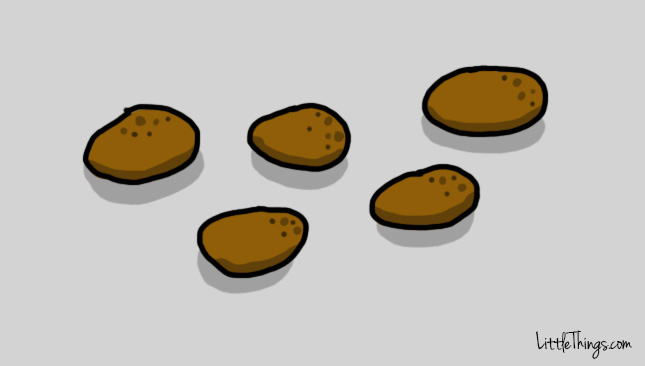
If you're seeing hard, sharp little lumps in your stool, this may mean that you have a serious fiber deficiency.
Fiber helps to "bulk up" your stool, and almost acts like glue to help keep the stool stuck together. In addition, you're probably missing much-needed bacteria to help your stool retain water.
These stools can be pretty painful to pass, and may happen to people on post-antibiotic treatments. You can consult your physician to see if there's any way you can supplement your diet.
6. Greasy, Foul Yellow Color
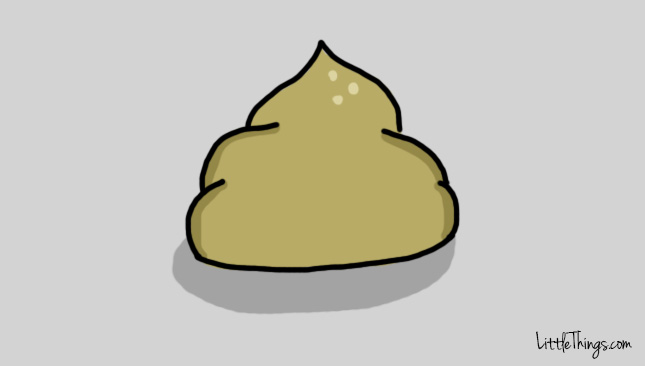
Yellowish stool may indicate that you have a problem in your gallbladder, or a giardia infection, an intestinal infection that will make you have stomach cramps, bloating, and nausea, according to the Mayo Clinic.
You may also be suffering from a condition known as Gilbert's syndrome, a liver disorder that is found in 3 to 12 percent of the population.
Yellow stool may also be caused by a couple of different foods and medications, or by the absence of bile salts in the gallbladder.
7. Sausage-Shaped And Lumpy
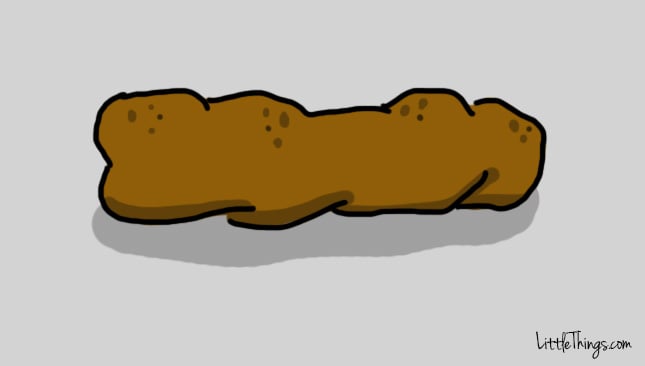
This kind of stool is basically a variation of separate, hard lumps — only, it's a single mass, all lumped together by fiber components.
This is a sign of constipation — the stools must have been in the colon for longer than the normal 72 hours.
If you are experiencing stool shaped like this, you most likely suffer from irritable bowel syndrome (IBS), according to Dr. Monastyrsky.
You also may have obstruction in your small intestine, so consult your doctor about this as soon as possible.
8. Sticking To The Toilet Bowl
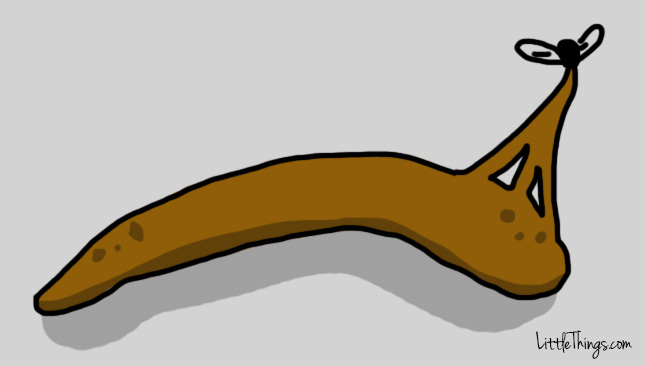
If your stool is soft and sticks to the sides of the toilet bowl, this can mean that you have too much oil in your system.
"Oil floats, so you'll see it in the water," said Dr. Jean-Pierre Raufman, a gastroenterologist at the University of Maryland. "They look like fat droplets, which can mean the body isn't absorbing the fats properly."
Visit your doctor to make sure you don't have a serious disease, like chronic pancreatitis, which prevents the body from effectively absorbing fat.
9. Blood-Stained
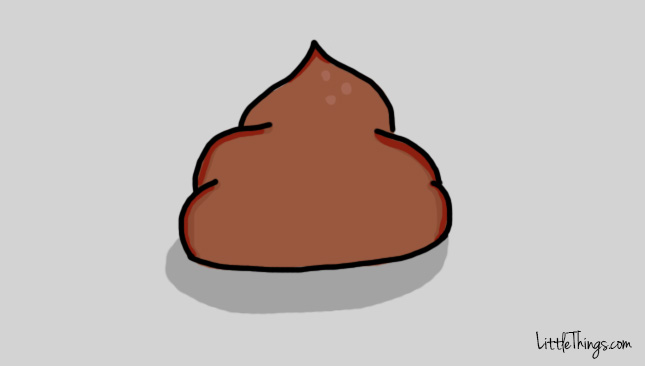
While seeing blood in your stool can be very frightening, there are a few possible reasons that may have caused it.
According to WebMD, there is bleeding somewhere in your digestive tract. The stool may appear either as a bright red color, or can look black and tarry, if the bleeding occurred higher up in the digestive tract.
Possible causes for bleeding may include: an anal fissure, colitis (inflammation of the colon), peptic ulcers, polyps, and even cancer.
10. Green-Colored
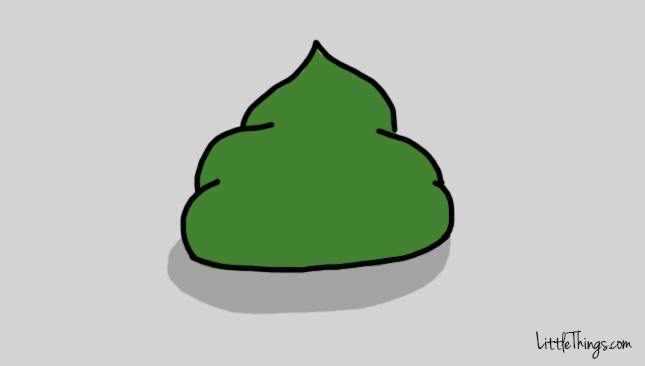
There can be several causes for green poop, the main one being a change in diet.
Dark green vegetables, for example, contain high amounts of chlorophyll, a chemical that plants need to make energy, and one that will also turn your stool a "highlighter green," according to Healthline.
While eating vegetables is the farthest thing from harmful, there are other foods that might not get processed properly. Things like food coloring will leave a colored residue in your stool. Or, this might be a sign that food is just moving too quickly through your large intestine.
Either way, green poop is normally nothing to worry about. Just drink lots of water to flush it out!
Please SHARE if you'll be thinking about your poop differently from now on!


